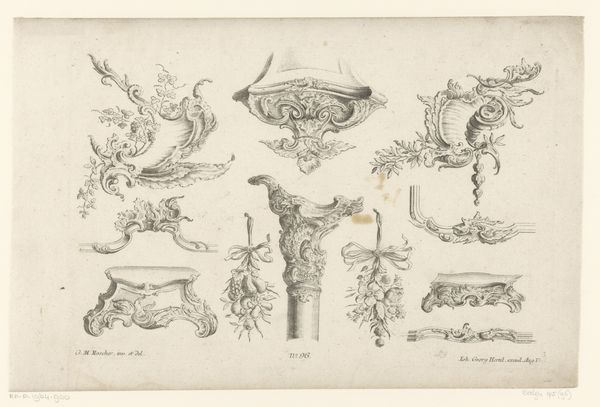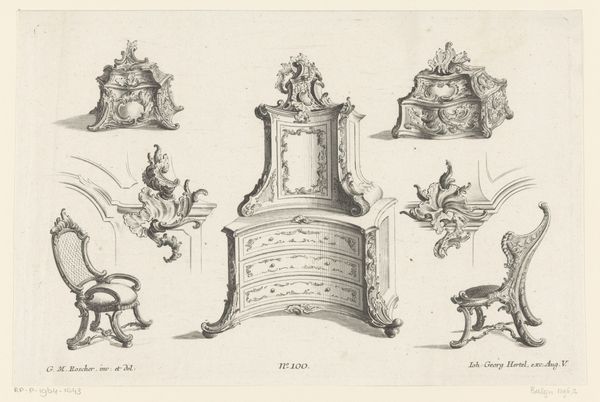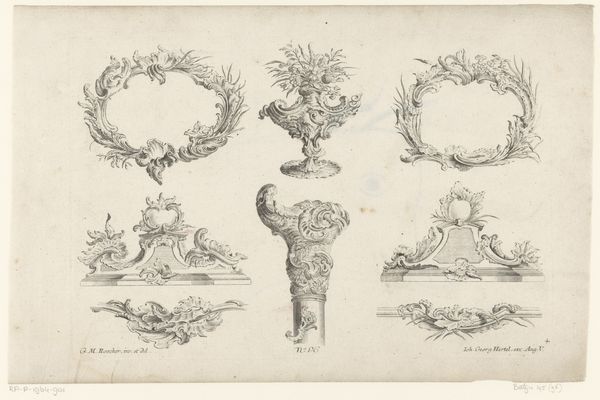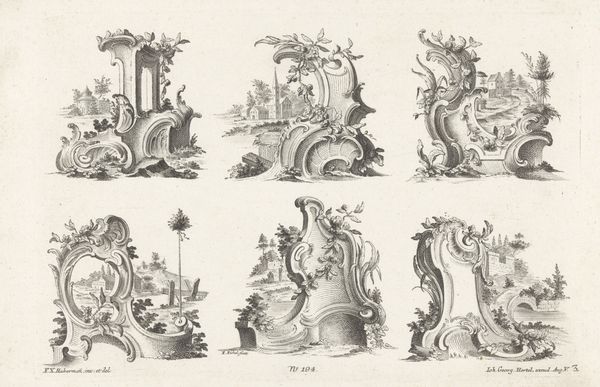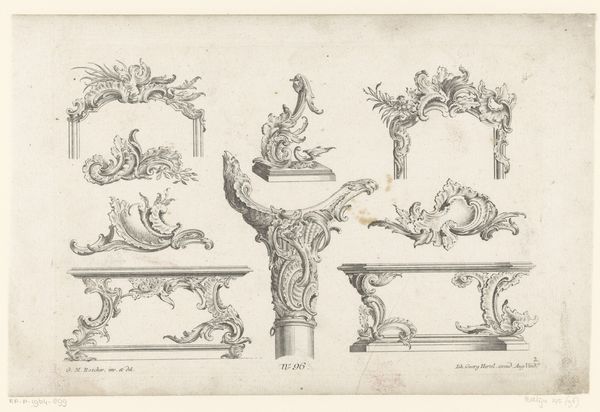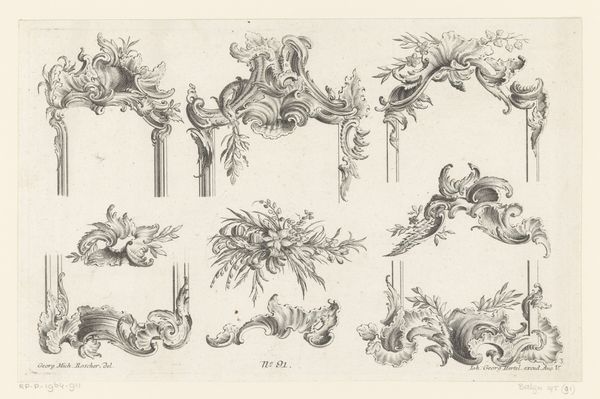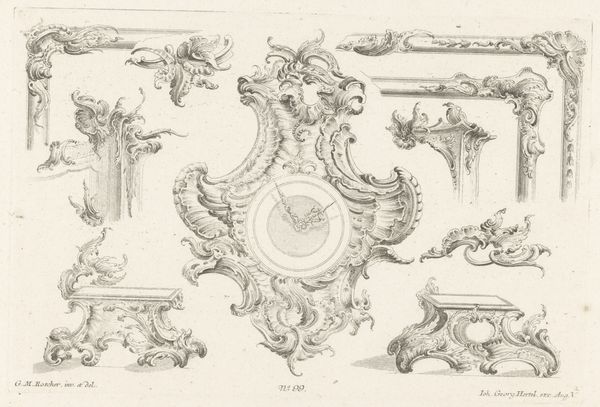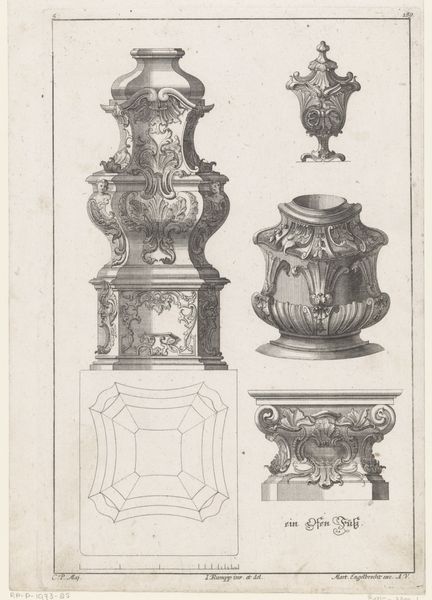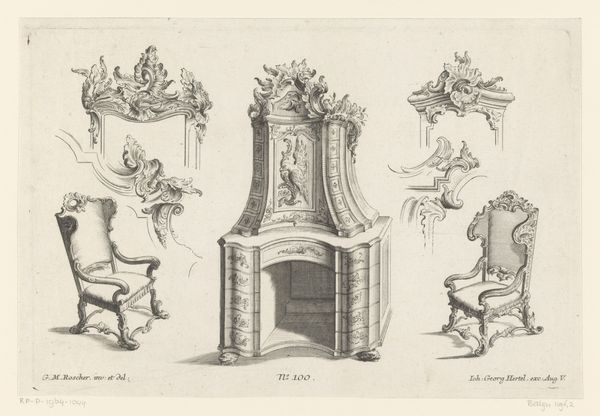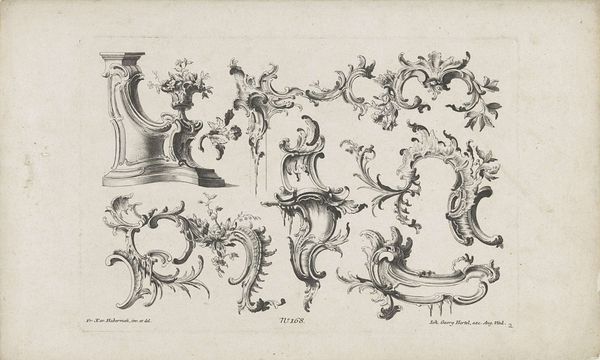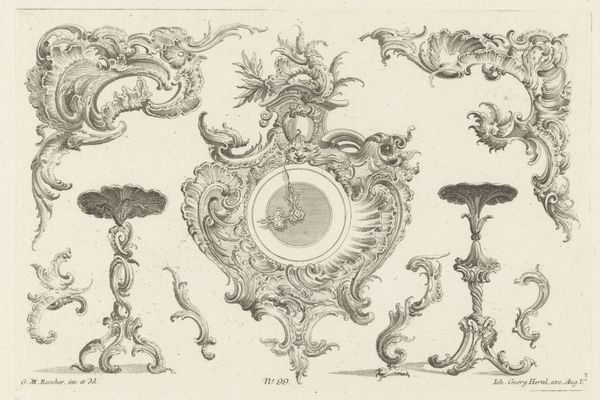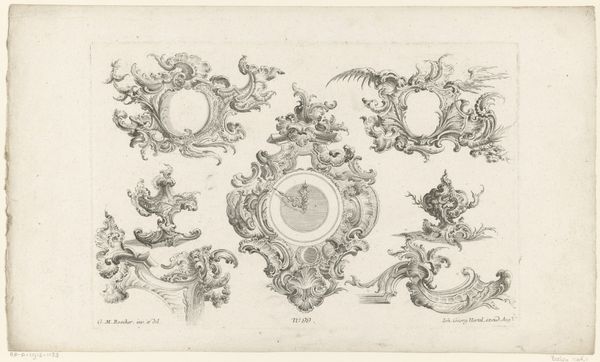
drawing, print, pencil, pen
#
drawing
# print
#
pen sketch
#
pencil sketch
#
geometric
#
pencil
#
pen
#
decorative-art
#
rococo
Dimensions: height 196 mm, width 297 mm
Copyright: Rijks Museum: Open Domain
Curator: Oh, this is quite whimsical. My first thought goes to… confectionary! A collection of spun-sugar delights, perhaps a fanciful architectural cake? Editor: Absolutely! We're looking at a drawing called "Rocailles en kandelaars" – or "Rocaille and candlesticks" – a piece from between 1727 and 1775, housed here at the Rijksmuseum. It's rendered in pencil and pen, a print showcasing different elements of Rococo design. It very much embodies its era’s playful elegance, reflecting power through opulence. Curator: "Playful elegance" sums it up perfectly. It's the art of excess! Though these designs might have been intended for some noble’s estate, in this medium and arrangement it’s the humbleness of the pen and pencil that strike me most. Imagine the meticulous hand, crafting all these swirls... almost meditative. Editor: Precisely! And this level of ornamental detail isn't simply about aesthetics. The Rococo period, though beautiful, saw the wealth divide of aristocratic society increasing with their use of extravagant visual rhetoric. The abundance of curves, scrolls, and flourishes signal an assertion of power and luxury during a time of widespread poverty. Curator: I can't help but see these not as statements of power, but dreams of it. Fantasies rendered by an artist likely outside of that circle of opulence, channeling its spirit, translating it. To me, they're echoes more than pronouncements. What do you think? Editor: Well, those interpretations aren’t mutually exclusive, and it speaks to the beauty of viewing the work today, centuries on. As a print, made using replicable and therefore democratic materials, this piece can be considered outside the constraints of wealth that the original ornamentation embodied. Though conceived to uphold hierarchy, it has the capacity to inspire outside of that original paradigm. Curator: Right you are. There's something quite subversive, now that I consider it. Like whispered secrets of extravagance made available to all. What a beautiful paradox. Editor: Indeed. Looking at this work allows us to reflect not only on artistic craftsmanship and the beauty of form but also the sociopolitical context of design and how historical objects live on in unexpected and transformative ways.
Comments
No comments
Be the first to comment and join the conversation on the ultimate creative platform.
